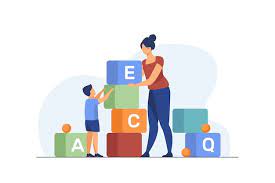Introduction
Talk therapy, such as cognitive behavioral therapy (CBT), is beneficial for individuals of all ages, including teenagers and young adults. CBT focuses on how feelings and ideas affect behavior. When used in therapy or online counseling, CBT often has a set goal and a certain number of sessions. Your youngster will learn from the therapist or an online counselor how to swap out unhelpful thinking patterns for constructive ones. Your child can use role-playing and other techniques to learn coping mechanisms for stressful situations. Typically, a therapist, the child, and a parent or caregiver will talk about objectives and develop a plan of care. We’ll go through the fundamentals of CBT for children and how to find a licensed online therapist.
Children’s Cognitive Behavior Therapy
CBT is a structured approach to tackling problems in a certain number of sessions. It might take as few as six sessions or as many as twenty or more, depending on the child and the specific goals.
Though talk therapy is one aspect of CBT, it is much more than that. Depending on your child’s needs, CBT can be utilized either alone or in addition to medication or other therapy. It is possible to alter the treatment strategy to accommodate cultural or religious needs. Children are helped to face issues and come up with solutions using arts and crafts, role-playing, and dolls and puppets. Additionally, it may keep younger kids interested. The goal of the therapist or your online psychologist is to provide your child practical tools so they may become self-assured and assume leadership. They’ll impart knowledge and abilities that are useful right away.
CBT with a trauma focus: Children impacted by traumatic experiences, including natural disasters, are treated with this approach. The therapist will focus on cognitive and behavioral deficiencies that are directly linked to the child’s traumatic experiences.
Modeling: After demonstrating or acting out a single example of the desired behavior—for example, how to deal with a bully—the therapist or an online child psychologist may urge the kid to repeat the activity or provide further examples.
Restructuring: This method shows a young person how to transform a bad thought pattern into a constructive one. For example, “I’m not the best soccer player, but I’m good at a lot of other things” may be substituted for “I’m terrible at football.”
Exposure: The child is progressively exposed by the therapist or psychologist to the things that cause anxiety and this is linked to relaxation methods that may aid in the child’s recovery from phobias and dread.
Regardless of approach, CBT, or cognitive behavioral therapy, can be given in a number of ways, such as:
1. Individual: Only the kid and the therapist are in each session.
2. Parent-child: The child psychologist collaborates with the parents and the kid, offering specific parenting techniques to enable the children to gain from cognitive behavioral therapy.
3. Family-based: Parents, siblings, and other family members may participate in sessions.
4. Group Setting: The children, a psychologist or therapist, and other kids going through comparable or related problems make up the group.
Even if your child does not have a recognized mental health diagnosis, CBT can still be beneficial. On the other hand, it may be quite helpful in treating some disorders. For example, children with ADHD may find it difficult to remain still and may act impulsively. Although there are medications to treat this condition, they are frequently neither the first nor the only choice. Research indicates that for certain teenagers, CBT combined with medication is more effective than medication alone.
For kids and teenagers with anxiety and mood problems, cognitive behavioral therapy (CBT) works well. According to, CBT has “strong support” as a successful first-line treatment for kids with anxiety issues. Adolescents with high-functioning autism spectrum disorder frequently experience anxiety. In a 2015 research, a CBT program was developed for preteens with clinical anxiety and autism spectrum disorders. The focus of the program was:
Availability
Testing the irrational beliefs
Caregivers offer support in behavior.
Aspects of treating autism spectrum disorders
Parents say that CBT had a good effect on the severity of anxiety symptoms.CBT is an empirically supported method that has shown promise in treating a variety of ailments.
Children with anxiety disorders who get CBT recover with notable symptom reductions after therapy. Follow-up studies of kids receiving treatment in community mental health clinics indicate that these recovery rates should hold true for four years following therapy.
Studies show that many kids with ADHD who got CBT had a significant reduction in the severity of their symptoms. For children suffering from PTSD, individual trauma-focused CBT can greatly reduce symptoms of anxiety, stress, sadness, and PTSD.
Conclusion
CBT with children can learn via counseling or teen therapy how their thoughts and feelings influence their conduct as well as how altering these aspects of themselves can alter behavior and feelings. To learn more about CBT and how it could assist your kid in overcoming behavioral, emotional, and other psychological difficulties, please feel free to get in touch with the “Best Child Psychologist” and Clinical Psychologist at TalktoAngel.


